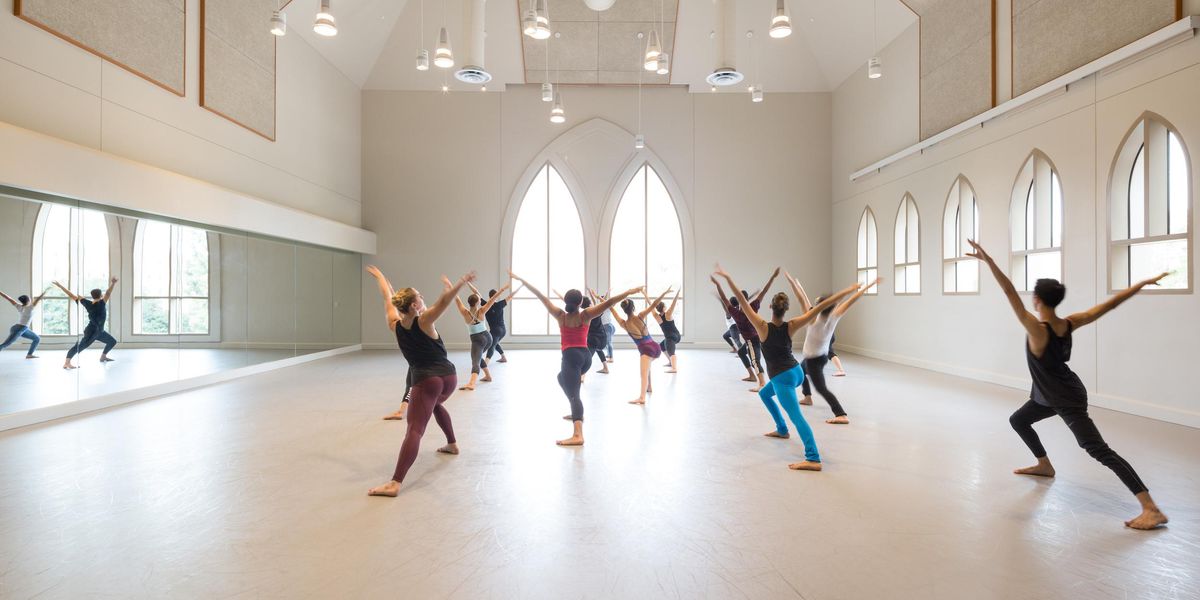Atanta Ballet: "Twyla Tharp's The Princess and the Goblin"
Cobb Energy Performing Arts Centre
Atlanta, GA
February 10–19, 2012
Performances reviewed: Feb. 18 & 19
Who would expect Twyla Tharp to be the 21st-century’s answer to August Bournonville? The connection could be felt in myriad happy ways during Tharp’s The Princess and the Goblin, given its world premiere by the Atlanta Ballet. This 75-minute work proved that present-day story ballets need not be overblown and lugubrious, that they can charm and amuse and convey an essence of moral radiance. Pleasant associations with Bournonville’s masterpiece A Folk Tale—with its endearing troll population—were evoked by Tharp’s witty goblin characters, whom the invigorating and personable Atlanta Ballet dancers embodied with verve. And Tharp’s intrepid, unspoiled heroine—a princess, but one who initiates action and does the rescuing rather than needing to be rescued—has a natural goodness worthy of a Bournonville heroine.
A co-production with Royal Winnipeg Ballet (where it enters the repertoire in October), The Princess and the Goblin is notable as the first time Tharp has incorporated an ensemble of children into her choreography. It is also her first full-evening classical ballet since Mr. Wordly Wise (1995) for The Royal Ballet. Clearly the narrative and/or dramatic Broadway works she has created over the past decade have informed Tharp on this occasion, in terms of character, focus, and pacing. The Princess and the Goblin progresses swiftly through its 12 scenes, borne along seamlessly by its well-chosen and ingeniously shaped score—Richard Burke’s arrangements and orchestrations of Schubert excerpts, with some of his own compositions threaded in. The music’s flavor and variety—propulsive or contemplative, soaringly romantic or bumptiously folksy—always supports the action.
Christine Winkler as great-great-grandmother Irene.
Tharp had envisioned a ballet based on George MacDonald’s classic 1872 children’s tale for 20 years, and her connection to the material is palpable. From the curtain rising on the pristine figure of Christine Winkler, spinning on pointe to draw us into the tale and to usher forth Alessa Rogers, who leads off a jaunty prologue that introduces all the main characters, to the final image of these same two dancers spinning in unison, Tharp’s dramatic sense is sure. She has created vivid characters; even the cave-dwelling goblin population, cursed with floppy feet and resembling urban street toughs in their shabby-chic get-ups, have their lovable side.
Not all the intricate ideas and plot developments of MacDonald’s dense fantastical tale are retained, and Tharp adds new elements—giving Irene two young sisters, delightfully portrayed by Stella McFall and Flannery Bogost. They and the cast’s 11 other children (students at Atlanta Ballet Centre for Dance Education, ages 8 to 15) are adorably feisty and un-self-conscious as they bounce and jive, march triumphantly, and flee from their goblin captors. Tharp retains MacDonald’s forthright hero, Curdie (although his identity as a miner is irrelevant here), who bonds with Irene and accepts her aid in his time of need. Their culminating pas de deux is sweetly satisfying and also has dramatic significance. As it unfolds, Curdie comes to share Irene’s ability to perceive the presence of her magical great-great-grandmother and namesake (Winkler’s character), whose bond with the young princess is the latter’s source of learning and courage.
Tharp spent over 12 weeks working with the company during several stints dating back to last May, and they clearly have absorbed her passion, intensity—and playfulness. Rogers, whose role is demanding, balances girlishness and incipient womanhood gracefully. She progresses into maturity from soft slippers and loose hair to acquire pointe shoes and put her hair up as she gains assertiveness and courage. Her dancing is clear and completely energized. Jacob Bush’s Curdie starts out as a strapping, open-hearted figure, and acquires nuance. John Welker, doubling as Irene’s neglectful, superficial King Papa and the pompously confident Goblin King, uses his long sleek limbs to slice through space with bracing clarity, but the scenario doesn’t always make his transitions between the characters clear. Tara Lee is memorable as the haughty Goblin Queen who enters with a prowling, lunging solo that evokes vintage Tharp, and becomes a deluded would-be-ballerina upon acquiring the pointe shoes that Irene introduces to the goblin women. Particularly delightful are Christian Clark and Jesse Tyler as Helfer and Dodge—goblin turncoats who end up assisting Irene, whose robust dancing and goofy personas evoke numerous Tharpian antecedents.
Tharp has embedded many ideas and layers into her ballet—which entertained a capacity (and family-filled) audience at its final performance. The passing-on of knowledge from the wise, beneficent great-great-grandmother (who functions as a fairy godmother or lilac fairy figure) to Irene, and the young girl’s subsequent passing-on of some of her acquired wisdom to the children she has saved, are clearly themes that drew Tharp to the tale. There are always new insights to discover and new directions in which to grow, the ballet suggests.
All photos of
Twyla Tharp’s The Princess and the Goblin by Kim Kenney, courtesy Atlanta Ballet.
Pictured at top: Alessa Rogers as Princess Irene, with members of the company.




